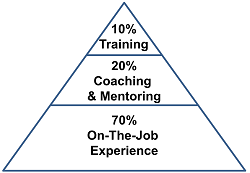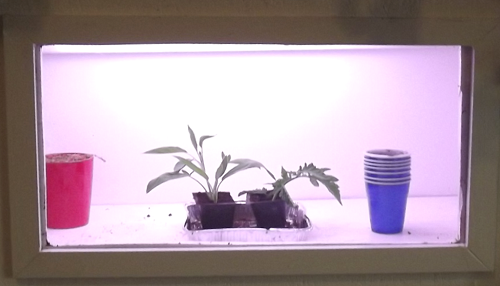When you walk in the room, who shows up for Read more →
The Indirect Cost of Growing Leaders
Posted Monday, June 10, 2013My wife and I have cultivated a square foot garden for many years. The work is enjoyable, the produce is delicious, and we save a bit of money. Every spring, we refresh the soil and purchase flowers, tomatoes and broccoli plants.
For organizations, growing leaders internally is like gardening. You invest time, energy and money upfront. In return, you get better leaders than you can purchase at the recruiter’s grocery store.
Leadership development, done well, consists of three components:
Training, often in a formal classroom setting, Formal training should be a small proportion of your  development process because of cost and poor transfer to the work situation.
development process because of cost and poor transfer to the work situation.
Coaching and mentoring help transfer classroom training to the job. They also target the specific growth needs of the leader. Coaching, especially, has the greatest potential to maximize leadership influence or trigger a career turnaround.
On-the-job experience is where most leadership growth happens. For leaders to grow, however, leadership experience must be staged well.
Direct Costs and Indirect Costs
Formal training has a direct cost. Coaching, if done with certified, external coaches also has a direct cost. Mentoring and on-the-job-experience have little or no direct costs.
With classroom leadership development, the direct costs are a small piece of the overall costs. In my experience, the indirect costs are much greater. Suppose you have a one-week training class for high potential individual contributors and first level managers. Their performance should be worth at least twice their pay, benefits and overhead (office space, computers, etc.). If your leaders have average compensation (salary, bonus, stock) of $100,000/year, we can assume their benefits would be about $50,000, and their overhead might be $25,000 . One week of leadership development for 20 leaders costs almost $135,000 in lost productivity.
On-the-job experience may seem cheaper, but once again the indirect costs are huge. If you develop leaders through job rotation, the performance valley of the transition can cost the organization at least six weeks of performance. If you rotate those same 20 leaders to new jobs, expect indirect costs of lost performance to exceed $800,000.
Leadership coaching is surprisingly affordable when you consider indirect costs. Many coaching engagements consist of an hourly coaching session once a month, usually at the leader’s office. The leader will typically invest another hour on follow-up work, trying out new behaviors in mini-experiments). As I coach, I often ask the leader’s team to give feedback on the leader. If the leader has a team of 12 who each invest 20 minutes in feedback, there is a loss of about 4 hours of productivity. For a year of coaching, the indirect costs for the group of 20 leaders would be less than $100,000 – cheaper than either a week of training or an annual job rotation.
Bottom line: Leadership development is costly. The indirect costs of lost performance is larger than the direct costs, and leadership coaching has less indirect costs than classroom training or job rotations.
“Let’s Cut Costs by Cutting Leadership Development”
It can be tempting to cut out leadership development when times are tough. However, growing leaders only when times are good is shorted sighted. You will not develop as many leaders, and you will develop leaders who prosper in good times but may falter in tough times.
When I started Slade & Associates as a full time venture, we had to manage our cash flow. So, we spent more money on the garden. We added a square. I also built a light box to grow plants from seeds to reduce purchases at the local nursery. In our first year, the garden yielded more than the costs of the space and the light box. And since then, we have enjoyed the extra yield and lower costs every planting season.

We use our light box in late winter and early spring to extend our growing season. I recommend that organizations do the same by growing leaders during economic winter. Cutting back on leadership development during an economic downturn is burning your leadership capital to improve your cash flow. It is penny-wise and pound-foolish. If you grow leaders during the winter, your organization will be positioned for even more success when the weather turns.



Pingback: The Indirect Cost of Growing Leaders | Communic...
Pingback: The Indirect Cost of Growing Leaders | If you l...
Pingback: The Indirect Cost of Growing Leaders | A Change...